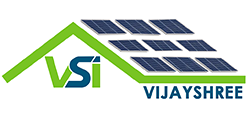Solar energy is growing source of renewable power. Engineers need to examine different options for their solar energy installations based on a variety of factors.
There are several types of photo-voltaic mounting structures:
- Ground-mounted
- Roof-top
- Pole-mounted
- Floating solar
The first three will be covered in this and following articles in the series. You can find out more regarding floating solar structures in this webinar: Floating Solar Farms.
PV Mounting Structure Modeling with STAAD.Pro
The panel that generates the electrical energy may be the principal component in these solutions, but to provide a stable platform on which the unit can operate means that a suitable structural frame is required. This is where STAAD.Pro structural analysis software can provide designers with a system to design their support structure using tools like:
- Advanced modeling
- Section assignment
- Loads and techniques for load application
Let’s start with the first reason, advanced modeling.
Advanced Modeling for Solar Structures
Solar supporting structures tend to be typical. These flexible frame-type structures are predominantly modeled in the analytical modeler of STAAD using the Structure Wizard. They may also be modeled in the regular STAAD GUI using node, beam elements, and commands like Translation Repeat to complete the structural model. Wherever possible, temperature straining effects should be handled by assigning axial releases in the STAAD model.
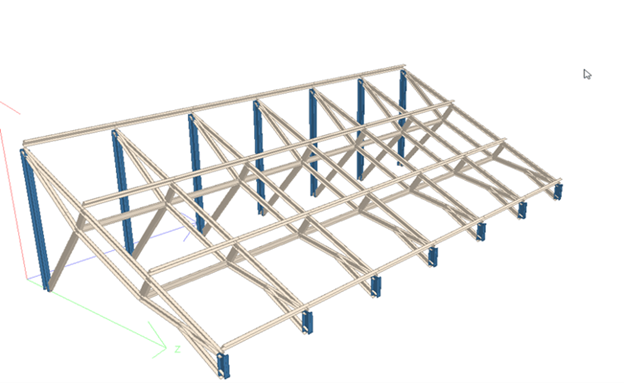 Figure 3: STAAD model of a typical photo-voltaic structure.
Figure 3: STAAD model of a typical photo-voltaic structure.
With OpenSTAAD, you can take advantage of API and link external tools like Microsoft Excel with STAAD to generate the model in just a few seconds. Parametric model generation by custom template files is quite handy and saves a lot of time. Bentley technical experts create custom files using API to help users automate workflows.
Figure 4: STAAD model generation using API of a typical PV structure.
The modeling, analysis, and design techniques are similar for a roof-top mounted structure as well as a ground-mounted structure. Still, due to high wind load intensities, the structural steel material and structural steel profiles used will vary. Structural steel, either hot-rolled or cold-formed, is the preferred choice for designing solar PV supporting structures.
In solar projects, especially ground-mounted solar structures, cold-formed sections are usually chosen, because they are:
- Cost-effective
- Lightweight
- Easy to assemble and erect on site
There are different structural arrangements and mechanisms in various projects. The tilting angle can be static at a fixed angle or change automatically or manually at different seasons. The configuration must be modeled accurately, as the wind load application depends on the inclination.
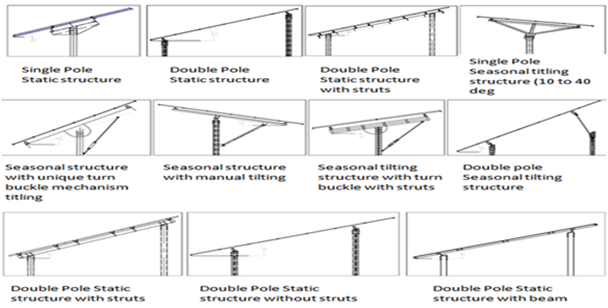 Figure 6: STAAD model of a typical solar structure
Figure 6: STAAD model of a typical solar structure
Solar supporting structures tend to be typical in configuration. So the workflow usually involves performing repetitive tasks, such as the reuse of section assignments, beta angles, load cases, and combinations. Creating a seed file option is available in STAAD because Update 6 enables the instant replication and reuse of data like material properties, section profiles, load cases and combinations.
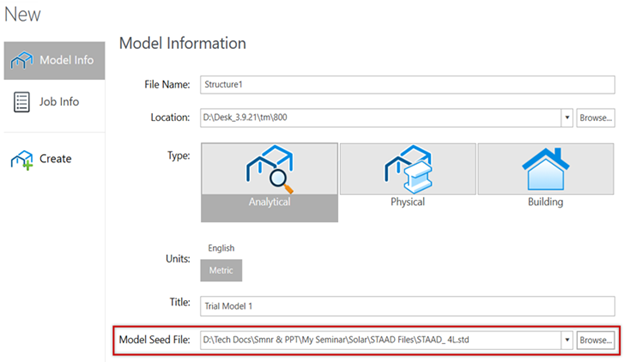 Effective Solution For Common Problems of Rooftop Solar Systems
Effective Solution For Common Problems of Rooftop Solar Systems
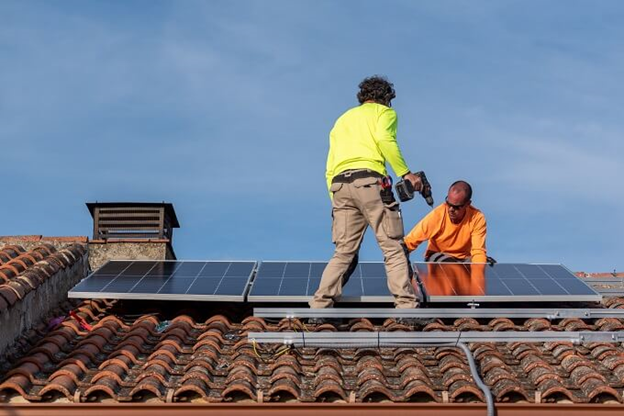 Solar energy has become the most appealing energy source in recent years due to its renewable and non-polluting characteristics. If we can harness solar energy properly, it has the potential to meet all of our future energy needs. The primary benefit of a rooftop solar system is that it reduces electricity bills.
Solar energy has become the most appealing energy source in recent years due to its renewable and non-polluting characteristics. If we can harness solar energy properly, it has the potential to meet all of our future energy needs. The primary benefit of a rooftop solar system is that it reduces electricity bills.
Depending on the size of the solar system and your power consumption, you can expect a significant reduction in your electricity bills. Furthermore, you will profit from the surplus energy you export to the grid. In general, maintaining solar panels is not a big task. Most solar system manufacturers provide a warranty of twenty to twenty-five years.
Solar power systems need to be cleaned twice or three times a year, which is the only maintenance. The solar power industry is constantly progressing. These advancements will aid in the more effective use of solar energy’s electric input. Solar energy, as opposed to fossil fuels, is the most effective clean energy source. Despite this, solar energy has some drawbacks.
SOME OF THE COMMON ISSUES OF SOLAR SYSTEM
The primary disadvantage of Installing a rooftop solar panels system is the high initial cost of purchasing solar panels, inverters, batteries, wiring, and installation. The main issue that solar consumers face is that the efficiency of a solar system is heavily dependent on the weather. If the sun does not shine for a few days, it may have a significant impact on your energy consumption.
If you want to use solar energy when the sun is not shining, it must be stored in batteries. Another source of concern for solar customers is the high cost of batteries. One of the concerns about rooftop solar panels installations could have been a lack of available space on the roof. Solar PV systems pollute significantly less than other energy sources. It does, however, contain some toxic materials and hazardous products used in the PV manufacturing process, which can have an indirect impact on the environment.
DEGRADATION OF SOLAR PANELS
A gradual decline in solar panel performance is to be expected. Solar modules degrade at a rate of 0.5% to 3% per year, according to industry standards. Natural causes cause the normal degradation of solar panels. Thermal cycling, damp heat, humidity freeze, and ultraviolet (UV) exposure are all-natural causes.
Thermal cycling refers to temperature swings between hot and cold that affect the soldered connections within the panel. A damp heat refers to the panels’ long-term exposure to high humidity at high temperatures. Damp heat may cause the insulating material to separate from the cells. The junction box adhesion may be impacted by sudden freezing in a high-humidity environment, known as humidity freeze.
UV rays from the sun can cause discoloration and degradation of the back sheet, which is the cover of the side of the panel that faces away from the sun. The back sheet acts as an electrical insulator and protects the photovoltaic cells and electrical components from external stresses. Busbars may have issues in addition to natural reasons. Soldering is used to connect these to the solar cell. Micro-cracking may form in the panels over time as a result of soldering points that put stress on the solar cell.
Read More: How Can Be Solar Panels Systems Installed on a Tile Roof
ELECTRICAL WIRING PROBLEMS
Faulty wiring is the most common issue that arises with solar panel systems. Your solar panels may perform inefficiently if your electrical wiring is old. It’s natural for the electrical wiring on your roof to deteriorate over time due to factors such as loose connections, corrosion, and oxidation. Furthermore, animals such as rats may chew on the wiring links. The consequences of wiring faults can range from decreased performance to a catastrophic fire on your roof. The only solution to this problem is to inspect the solar panels on a regular basis. It will assist you in mitigating the risk. It is also critical to contact a licensed electrician if you encounter any problems with the electrical wiring.
ROOFING PROBLEMS (LEAKAGE)
Roof leaks may be caused by solar panels. The water flow may be disrupted while the panels are being installed on the roof. This happens most often when contractors fail to account for water flow during installation. A snail track is one of the most typical leakage concerns. Snail trails are the brown lines that grow on the surface of your solar panels, giving the impression of snail tracks. These are caused by a buildup of moisture in your solar panels, which affects overall performance and may even lead to premature failure. This might be due to things like poor silver paste or tiny fractures.
SOLAR INVERTER PROBLEMS
Solar inverters will assist you in generating the majority of the electricity required to power your home. Faulty inverter installation is one of the issues that arise with inverters. A faulty installation will result from a misconnected or incorrect program. A variety of tests can be performed to determine whether the inverter is functioning properly, including yield tests, remote activation and deactivation, and reactive power regulation.
Overheating could be a problem for consumers. The temperature has a high impact on inverters. If the maximum operating temperature is reached, high temperatures will cause a significant reduction in production and may even result in a production stop. It is recommended that you assess whether the provided cooling technology is adequate during the design stage.
Isolation occurs as a result of a short-circuit between various parts of the circuit, and the inverter will then report an “isolation alarm.” If an isolation fault occurs, the inverter will either stop completely or operate at the bare minimum. To avoid this issue, use high-quality DC cables and ensure proper installation. After a grid failure, your inverter may fail to restart.
After a grid failure, an inverter must be able to restart itself. To avoid such issues, make sure your inverter’s components are made of high-quality materials. Choose the most reputed solar panel installation providers. Furthermore, ensure that the company has high-quality products and that your panel has a proven, long-term product warranty.
OTHER DRAWBACKS OF SOLAR PANELS
Hot spots on solar panels are a significant issue with rooftop solar panels. It occurs when the energy from your solar panel is unable to reach your inverter; cells become overloaded and emit excessive heat. It may reduce the efficiency of solar panels and, in the worst-case scenario, render them irreparable. The most common causes of hot spots on panels are an accumulation of dirt or bird droppings, partial shading, and even structural flaws.
HOW TO OVERCOME FROM COMMON ROOFTOP SOLAR SYSTEM PROBLEMS?
As described above, there are plenty of disadvantages to solar panels, but they are the best solution to decrease the power bill. And if you hire a professional and certified rooftop solar system installation provider, then they can handle all the above issues. Choose the one that has enough staff with appropriate skills to solve all the issues related to the rooftop solar system.
Contact VSI for the best and most reliable solar panels in INDIA. They have been in the business for the last 8+ years.

